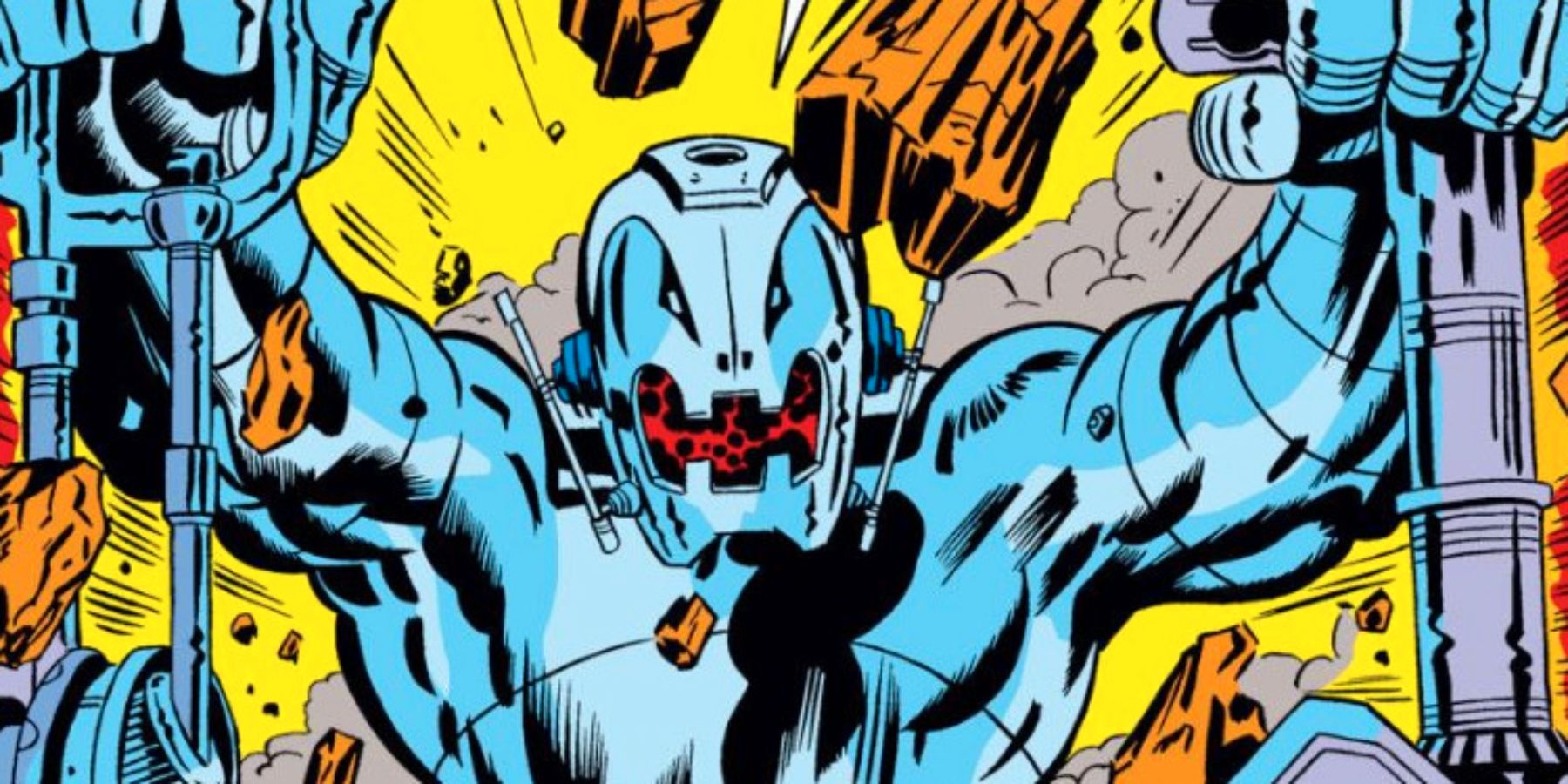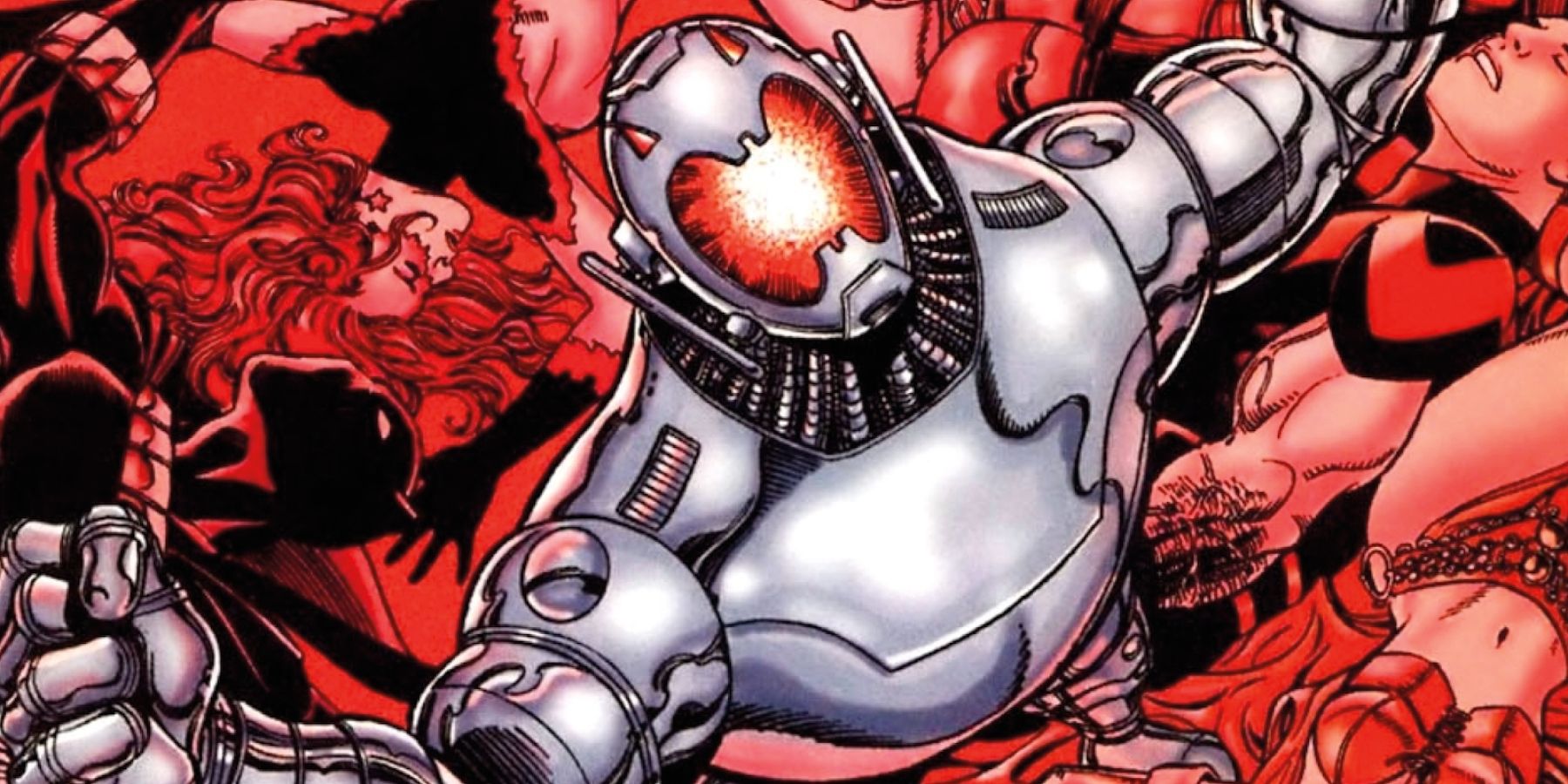In recent years, the mechanical megalomaniac known as Ultron has gone from being known only to die-hard Marvel Comics fans to becoming one of Marvel’s most infamous supervillains. After all, he’s one of only three villains (so far, anyway) to be the main antagonist of an Avengers movie, granting Ultron a status shared only by Thanos and Loki.
However, Ultron’s portrayal in the Marvel Cinematic Universe — as seen in The Avengers: Age of Ultron, in which James Spader portrayed the ruthless robot — has proven to be controversial among fans. Plenty of moviegoers were underwhelmed by Ultron’s less-than-threatening depiction, while comic readers found his more humorous dialogue to be out of character. But in light of Ultron’s recent return in the What If…? animated series, it’s time to take a look back at this metallic menace’s comic book history and see exactly how it compares to his MCU counterpart.
RELATED: What If...? Episode 8 Gives Ultron The Second Chance He Deserves
Ultron made his comic debut all the way back in 1968, when writer Roy Thomas and artist John Buscema introduced him in The Avengers #54. However, the method in which the iconic villain made his first appearance was a rather unorthodox one. The main antagonist of the issue is a mysterious cloaked villain known as the Crimson Cowl, who has brought together a team of villains known as the Masters of Evil to destroy the Avengers. The team includes a few minor comic villains like Klaw (better known to MCU fans as Andy Serkis’ character Ulysses Klaue) — along with the Black Knight, aka Kit Harington’s Eternals character Dane Whitman. Even Tony Stark’s loyal butler Edwin Jarvis is seemingly in on the conspiracy, leaking information to the Crimson Cowl. But at the end of the issue, Jarvis reveals himself to be the true Crimson Cowl, much to the Avengers’ horror. Meanwhile, the mysterious cloaked villain is unmasked as a robotic decoy: one who current fans will likely find very familiar.

Indeed, the next issue reveals that Jarvis was never really evil at all, only brainwashed by the real mastermind — the robot Crimson Cowl, who states that his true name is “Ultron-5, the Living Automaton”. The Avengers rescue Jarvis and defeat the Masters of Evil with the help of Black Knight, who was working as a double agent all along. However, Ultron escapes to menace the Avengers another day, his true motives and origins still unknown. Needless to say, this overly elaborate storyline hasn’t found its way to any adaptations, especially since it portrays Ultron as a completely random villain with no prior connection to the Avengers. However, Ultron’s next appearances cover some much more familiar ground.
Just two issues later, in Avengers #57, Ultron returns as the Avengers have their first encounter with the Vision. The MCU deviated from the comics by depicting the Vision as a hybrid being, with a Vibranium body created by Ultron, a consciousness created by JARVIS fusing with the Mind Stone, and a spark of life granted by Mjolnir’s magic. But in the source material, Vision is the sole creation of Ultron — his firstborn son. However, Vision quickly turns on his creator, teaming up with the Avengers to defeat Ultron. The next issue, #58, finally reveals Ultron’s origin story: he was a robot created by Hank Pym, who attempted to kill his creator mere seconds after activating. In only a few moments, Ultron goes from calling Pym “da-da” like an infant to speechifying about his superior intellect. Ultron manages to subdue Pym by wiping his memories, then escapes to build himself a new body.
Right away, there are some clear differences between the film and comic Ultrons. First and foremost is that Ultron was originally built by Hank Pym, the first Ant-Man, rather than Tony Stark. In fact, Pym wouldn’t even make his film debut (played by Michael Douglas in Ant-Man) until after Age of Ultron. Additionally, while the film Ultron was created to bring peace to the world — a purpose that is soon twisted into his genocidal ambitions — the comic Ultron has no clear reason for his hatred of humanity. The idea of Ultron as a tool of peace originated with the 2010 Avengers: Earth’s Mightiest Heroes cartoon, and later iterations of the character would carry over the villain’s characterization as a twisted would-be savior. But the original Ultron, like many villains of his day, had little motivation beyond evil for evil’s sake and little characterization besides maniacal ranting.

The portrayal of Ultron as a generic killer robot wouldn’t last forever, however. The first writer to offer a bit more nuance to Ultron’s initially-flimsy motives was Kurt Busiek, who penned the “Ultron Unlimited” arc in Avengers Vol. 3 #19-22 — arguably the greatest Ultron story in comic history. The arc begins with Ultron invading the fictional nation of Slorenia, exterminating all life in the country with his robot army. Ultron’s drones then kidnap Hank Pym, Janet Van Dyne, the Vision, and Wanda Maximoff, who Ultron considers his “family”. Busiek recontextualizes Ultron’s fixation on creating more robots like himself, positing that despite his wish to destroy humanity, Ultron still wishes to emulate them on some level. As cold and logical as he may seem, Ultron harbors the all-too-human desire for a family to call his own. Ultron admits that he doesn’t want to rule over a hive mind of unthinking drones, but rather a true society of individuals. Obviously, Ultron’s plans of conquest are thwarted, but “Ultron Unlimited” still marked a major turning point for the character: it established that underneath the surface, Ultron has emotions.
In the 2015 graphic novel Avengers: Rage of Ultron, writer Rick Remender took this idea further by expanding on an oft-overlooked detail from Ultron’s origins. Ultron’s AI was originally based on Hank Pym’s own brain patterns, meaning that Ultron’s consciousness is modeled after his own father’s personality. In Remender’s interpretation, Ultron’s desire to create a perfect mechanical world is ultimately a mask for the manifestation of Pym’s own dark side. All of Hank’s self-loathing, bitterness and repressed misanthropy are amplified in Ultron’s apocalyptic wrath. As Ultron says, “I’m the embodiment of what you truly want — to erase them all.”
This characterization of Ultron as the incarnation of his creator’s worst impulses is reflected in his film counterpart, who reflects Tony Stark’s own god complex with his authoritarian need for order. Even MCU Ultron’s quippy personality has some basis in the smugly sardonic dialogue of Busiek’s Ultron. Besides their different creators, James Spader’s portrayal of Ultron isn’t too far removed from the comics at all. Other than his poor performance as a physical threat, the biggest failure of MCU Ultron is likely his lack of nuance compared to his comic counterpart.
Despite his origin as an archetypical evil robot, Ultron has since evolved into a truly fascinating antagonist. He’s a paradox in many ways — logical yet emotional, hating humanity yet in want of a family, longing to destroy his father yet reflecting all his darkest traits. Ultron is perhaps one of Marvel’s most deceptively deep villains, and if his return in What If…? is any indication, we haven’t seen the last of him in the MCU.
MORE: Spider-Man: Who Will Be In No Way Home's Sinister Six?

